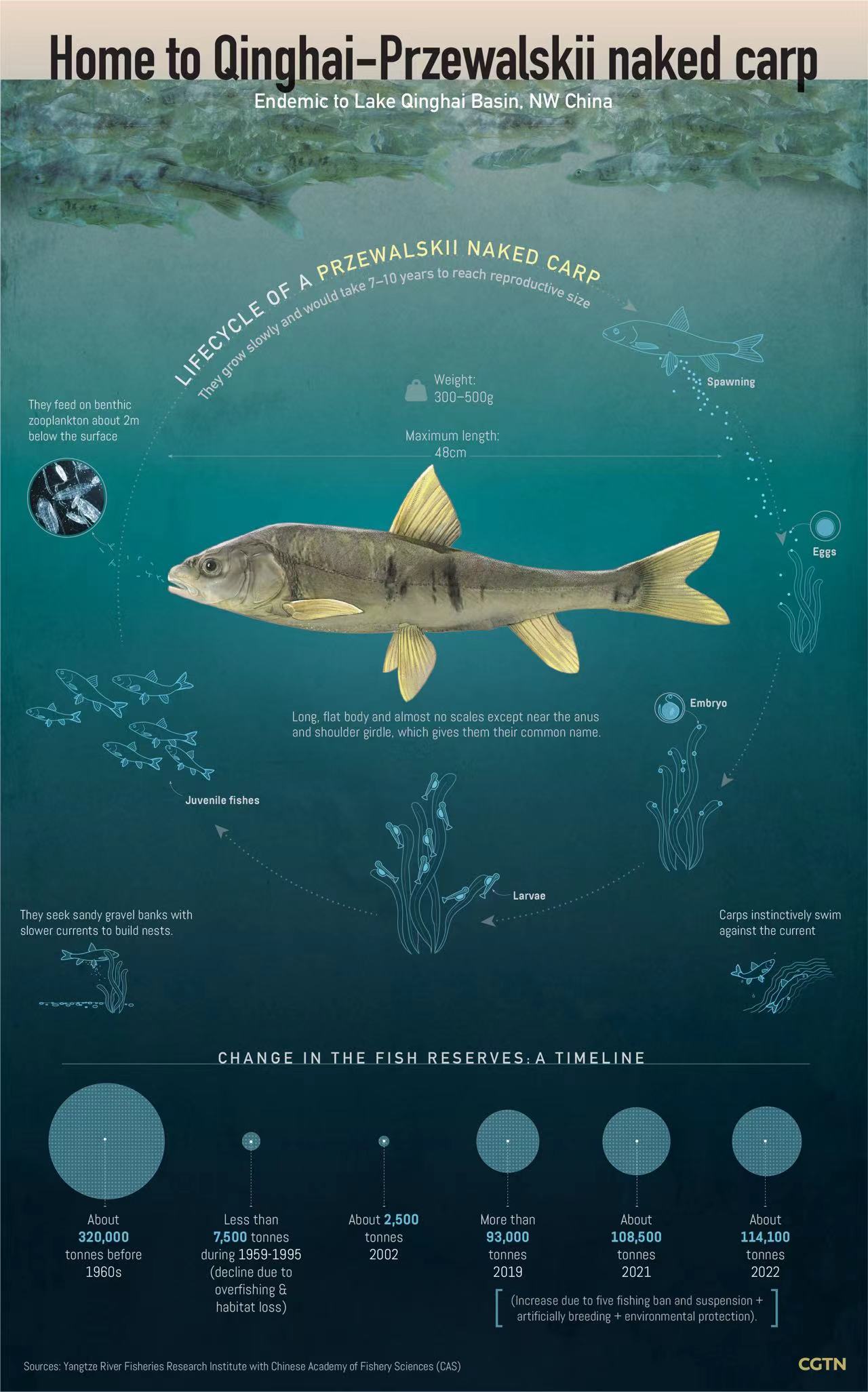
In northwest China's Qinghai Lake, the largest inland saltwater lake in China, lives a fish species that is adaptable in cold water with high levels of salt and alkalinity. Native to Qinghai Lake, the Przewalskii naked carps swim against the current from the lake, upstream the rivers, to spawn every May to August. They have to jump high and fight against the current, for only the victor can reach the destination, while the weary will lose their lives.
The naked carp, which is under China's national second-class protection, is a core species within the water-fish-bird-grass ecosystem of Qinghai Lake.
However, the species was on the brink of extinction a few decades ago.
During 1950 to 1995, there were less than 7,500 tonnes of the naked carps due to overfishing and a habitat loss, down from 320,000 tonnes in 1960, according to Yantze River Fisheries Research Institute with Chinese Academy of Fishery Sciences. At that time, the species was on the verge of distinction. Realizing the pressing issue, the local government decided to ban fishing in winter in 1982 and increased the crackdown on illegal fishing and trading. Combined with artificial breeding and the improvement of the ecology of Qinghai Lake, the carp population bounced back in spite of its low fertility rate.
More than 40 years after the launch of a series of protection measures, saving the naked carp has become one of the most successful animal conservation projects in China. As of 2022, the amount of carps reached about 114,100 tonnes, 45 times of that in 2002.
(Cover image designed by CGTN's Xing Cheng and info-graphic designed by CGTN's Mukesh Mohanan)
(If you have specific expertise and want to contribute, or if you have a topic of interest that you'd like to share with us, please email us at nature@cgtn.com.)